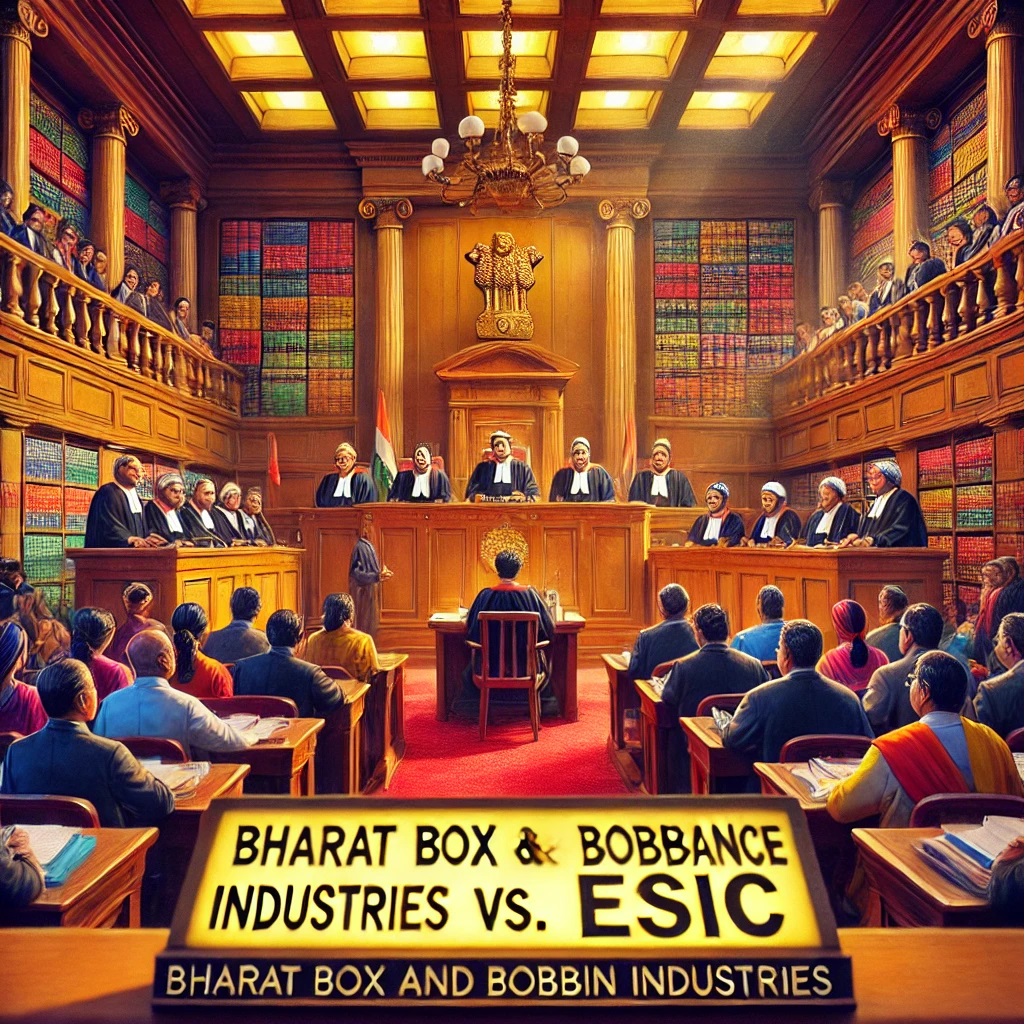
The recent judgment in Bharat Box and Bobbin Industries vs. Employees State Insurance Corporation (ESIC) sheds light on critical aspects of ESI coverage and the legal intricacies around determining employee status. The case revolves around the employer’s liability under the Employees’ State Insurance (ESI) Act, 1948, and presents a valuable precedent for businesses grappling with compliance issues under the Act.
Case Background
Bharat Box and Bobbin Industries, a Pune-based business involved in manufacturing packing boxes, plywood reels, and strip drums, found itself in a prolonged legal battle with the Employees’ State Insurance Corporation (ESIC). The ESIC, during an inspection, found that the company had employed more than 10 workers between November 1977 and December 1985, which would make the establishment liable for ESI contributions during that period.
The company contended that they never employed 10 or more workers before February 1986 and that two individuals, Mr. V. P. Sampat and Mr. M. V. Joshi, were not employees but part-time professionals engaged for accounting and statutory compliance services.
Key Issue: Defining ‘Employee’ Under the ESI Act
The core issue in this case was whether Mr. Sampat and Mr. Joshi were to be considered employees of the establishment under the ESI Act. If they were classified as employees, the total number of workers would exceed 10, making the company liable for ESI contributions for the period under review. The ESI Act mandates contributions for establishments that employ 10 or more workers.
The Employees’ State Insurance Court had previously ruled in favour of ESIC, citing that even though the two individuals were not reflected in the wage register, their payments were recorded in the cash book, which suggested deliberate non-compliance with ESI obligations.
The Court’s Judgment
Upon reviewing the evidence, the Bombay High Court disagreed with the lower court’s findings. The court concluded that both Mr. Sampat and Mr. Joshi were engaged as professionals and were not regular employees of the establishment. The decision hinged on the fact that:
- Lack of Evidence: There was insufficient evidence to suggest that Mr. Sampat and Mr. Joshi were employed as regular workers. Their names did not appear in the wage register, and they were part-time professionals providing specific services to the company.
- Misinterpretation of Records: The cash book entries reflecting payments to these two individuals were not enough to conclude they were employees. The Court observed that this inference was not based on direct evidence of employment but rather on assumptions about the company’s intent to avoid ESI compliance.
- Employment Status: The court found that Mr. Sampat and Mr. Joshi provided professional services to multiple businesses, and their engagement with Bharat Box and Bobbin Industries was on a part-time basis, not as employees contributing to the core operations of the business.
Based on these observations, the court ruled that the establishment did not employ the requisite number of workers (10 or more) during the notice period and was, therefore, not liable to pay ESI contributions for the period between November 1977 and December 1985.
Legal Implications
This judgment sets an important precedent in understanding the application of the ESI Act. Employers should note the following points:
- Clear Documentation: Establishments should maintain clear records distinguishing between regular employees and professionals engaged for specific tasks. Wage registers and related documentation must accurately reflect the employment status to avoid legal complications.
- Professional Engagement vs. Employment: This case highlights that professionals providing specific services to an establishment on a part-time basis may not necessarily be classified as employees. However, employers must ensure their engagements comply with all statutory provisions, and any ambiguity in documentation can lead to adverse rulings.
- Burden of Proof: The onus lies on the employer to prove that individuals are not employees but professionals or independent contractors. The evidence must be clear and free from assumptions, as courts require substantial proof to overturn decisions regarding ESI compliance.
Conclusion
The Bharat Box and Bobbin Industries vs. ESIC case underscores the importance of accurate employee classification and documentation in matters of statutory compliance. While the ESI Act aims to provide essential benefits to workers, this judgment clarifies that only regular employees contributing to the day-to-day operations of a business fall under the Act’s coverage.
For businesses, this serves as a reminder to review their employment records and ensure that all professionals and employees are properly documented to avoid legal disputes with statutory authorities.
This ruling also reinforces that courts will critically examine the evidence before enforcing ESI liabilities, ensuring that employers are not penalised based on assumptions or incomplete records.
As India continues to strengthen its labour laws, cases like this provide valuable insights for both legal practitioners and business owners, emphasising the need for compliance, transparency, and thorough documentation in employment matters.






